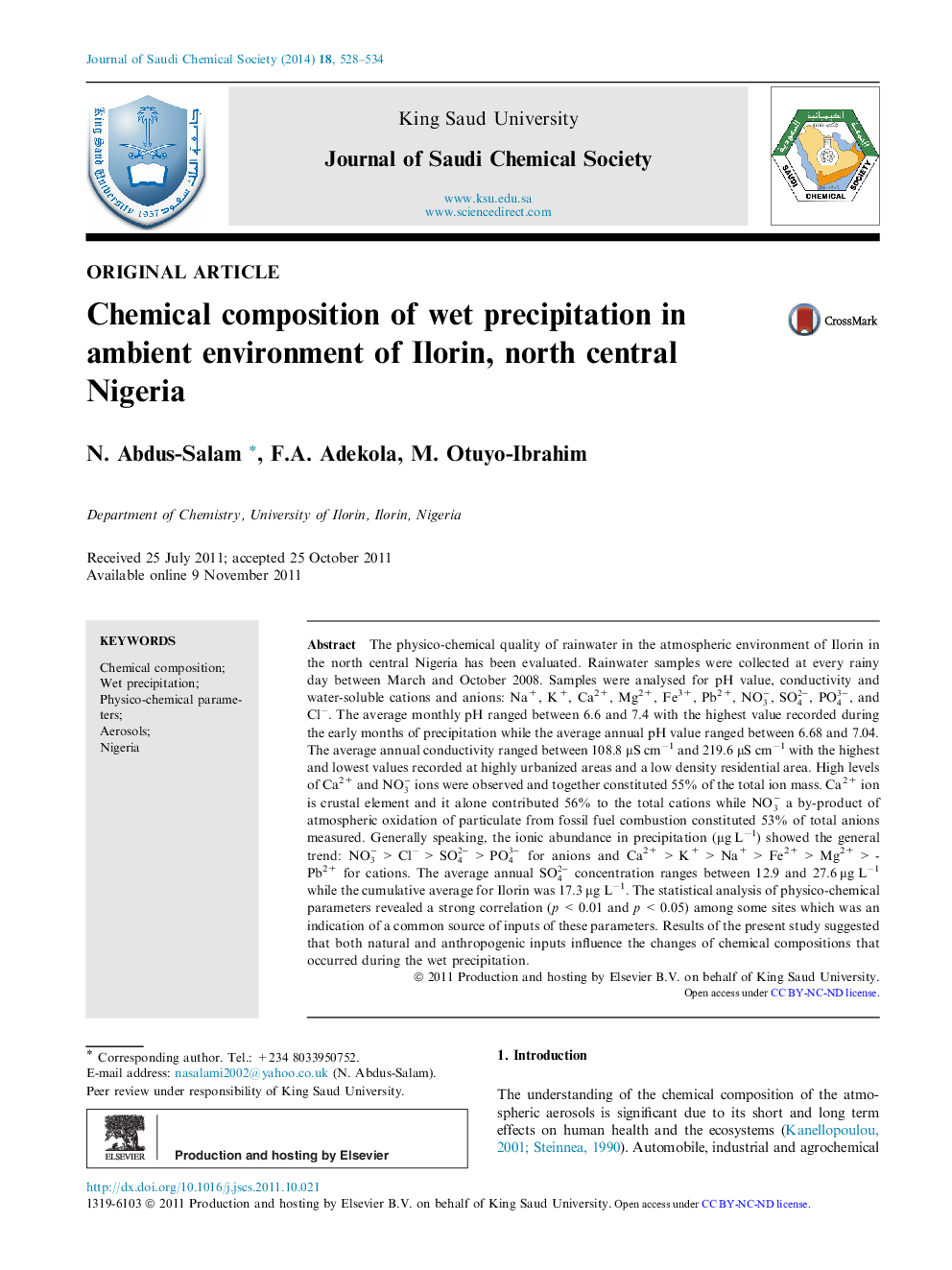| Article ID | Journal | Published Year | Pages | File Type |
|---|---|---|---|---|
| 229489 | Journal of Saudi Chemical Society | 2014 | 7 Pages |
The physico-chemical quality of rainwater in the atmospheric environment of Ilorin in the north central Nigeria has been evaluated. Rainwater samples were collected at every rainy day between March and October 2008. Samples were analysed for pH value, conductivity and water-soluble cations and anions: Na+, K+, Ca2+, Mg2+, Fe3+, Pb2+, NO3-, SO42-, PO43-, and Cl−. The average monthly pH ranged between 6.6 and 7.4 with the highest value recorded during the early months of precipitation while the average annual pH value ranged between 6.68 and 7.04. The average annual conductivity ranged between 108.8 μS cm−1 and 219.6 μS cm−1 with the highest and lowest values recorded at highly urbanized areas and a low density residential area. High levels of Ca2+ and NO3- ions were observed and together constituted 55% of the total ion mass. Ca2+ ion is crustal element and it alone contributed 56% to the total cations while NO3- a by-product of atmospheric oxidation of particulate from fossil fuel combustion constituted 53% of total anions measured. Generally speaking, the ionic abundance in precipitation (μg L−1) showed the general trend: NO3- > Cl− > SO42- > PO43- for anions and Ca2+ > K+ > Na+ > Fe2+ > Mg2+ > Pb2+ for cations. The average annual SO42- concentration ranges between 12.9 and 27.6 μg L−1 while the cumulative average for Ilorin was 17.3 μg L−1. The statistical analysis of physico-chemical parameters revealed a strong correlation (p < 0.01 and p < 0.05) among some sites which was an indication of a common source of inputs of these parameters. Results of the present study suggested that both natural and anthropogenic inputs influence the changes of chemical compositions that occurred during the wet precipitation.
